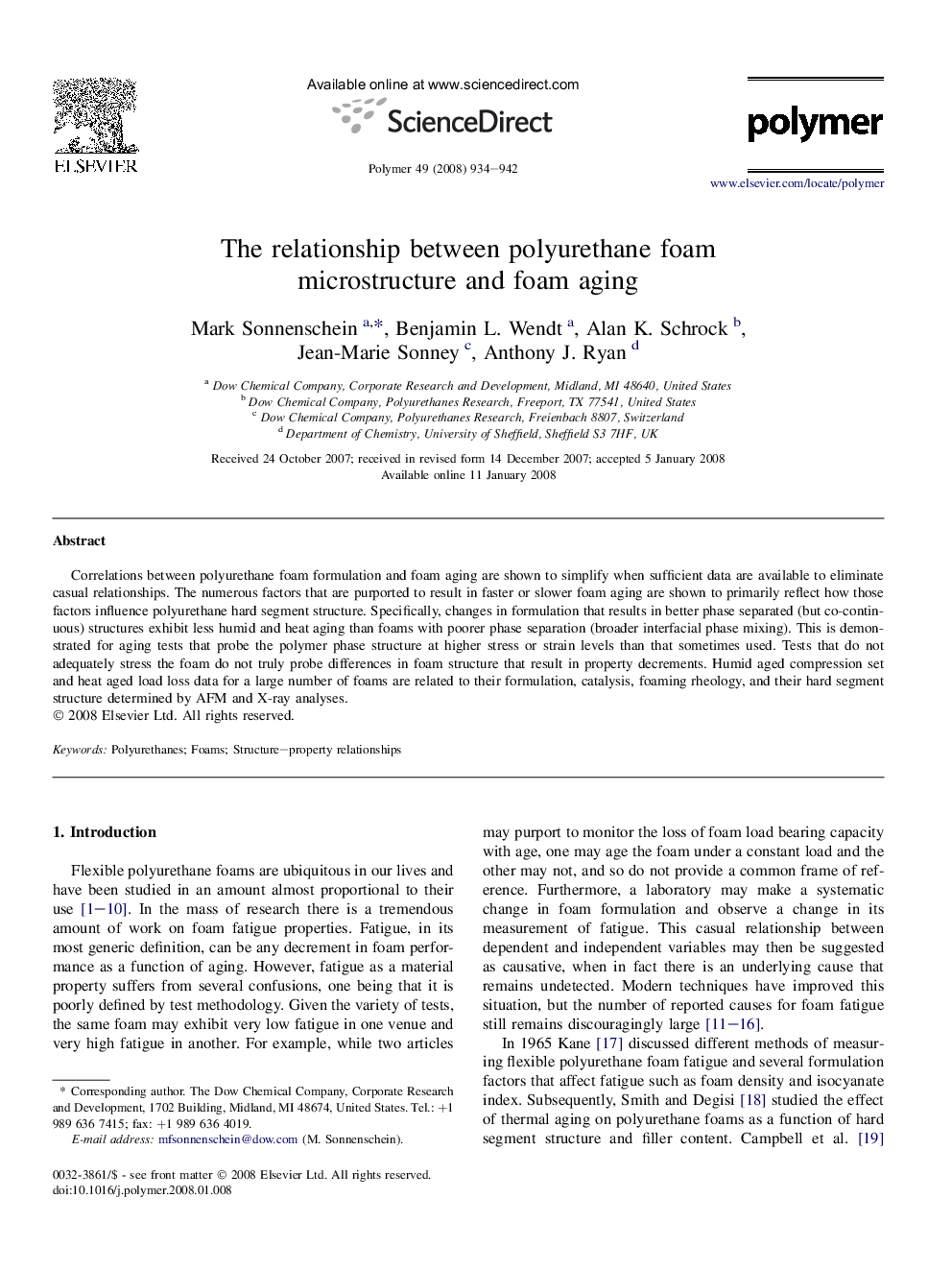| Article ID | Journal | Published Year | Pages | File Type |
|---|---|---|---|---|
| 5187361 | Polymer | 2008 | 9 Pages |
Correlations between polyurethane foam formulation and foam aging are shown to simplify when sufficient data are available to eliminate casual relationships. The numerous factors that are purported to result in faster or slower foam aging are shown to primarily reflect how those factors influence polyurethane hard segment structure. Specifically, changes in formulation that results in better phase separated (but co-continuous) structures exhibit less humid and heat aging than foams with poorer phase separation (broader interfacial phase mixing). This is demonstrated for aging tests that probe the polymer phase structure at higher stress or strain levels than that sometimes used. Tests that do not adequately stress the foam do not truly probe differences in foam structure that result in property decrements. Humid aged compression set and heat aged load loss data for a large number of foams are related to their formulation, catalysis, foaming rheology, and their hard segment structure determined by AFM and X-ray analyses.
